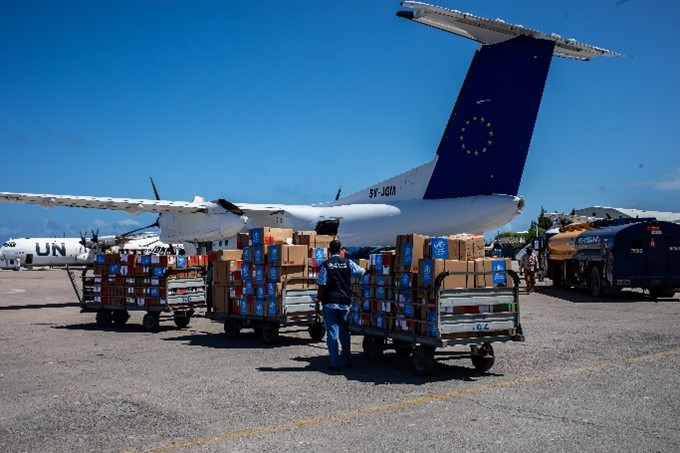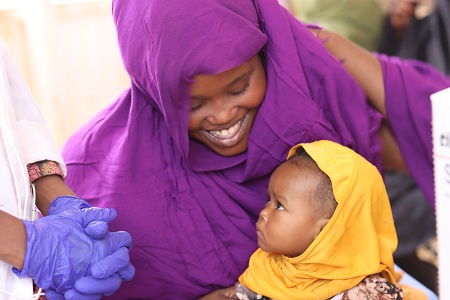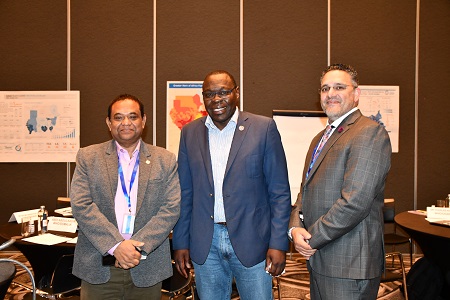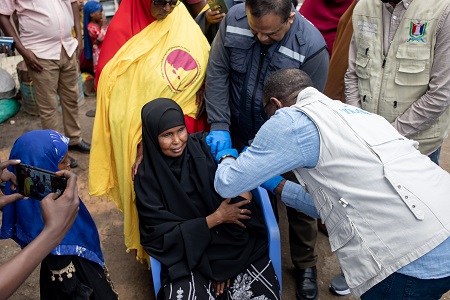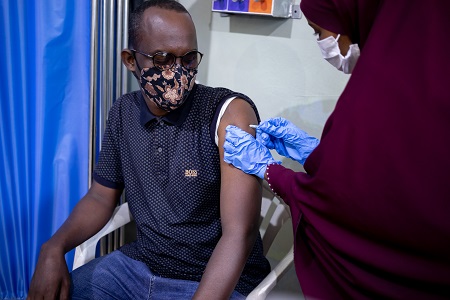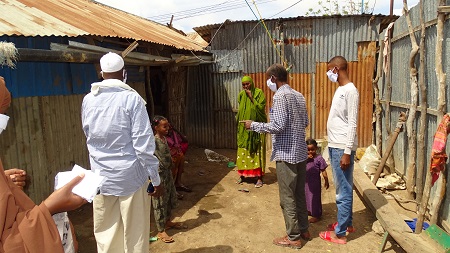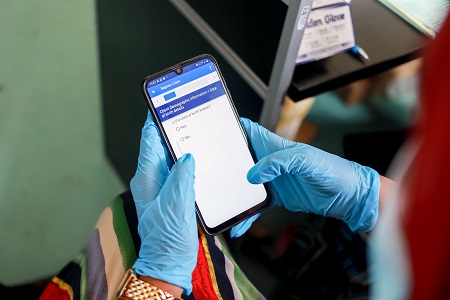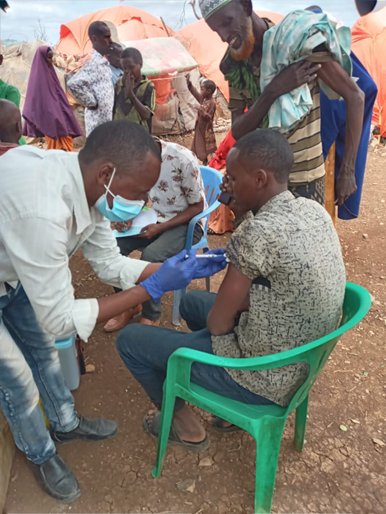 Outreach vaccination team in action at IDP camp in Baidoa, 8 October 2022Mogadishu, 11 October 2022 – Amid multiple outbreaks in the country, Somalia with support of WHO, UNICEF, donors and other partners have achieved another landmark in its fight for ending the COVID-19 pandemic. The country reached its target vaccinating 30% of its population fully against COVID-19 disease on 8 October 2022. The country is now well poised to achieve its target of fully vaccinating 40% of the target population by the end of the current year.
Outreach vaccination team in action at IDP camp in Baidoa, 8 October 2022Mogadishu, 11 October 2022 – Amid multiple outbreaks in the country, Somalia with support of WHO, UNICEF, donors and other partners have achieved another landmark in its fight for ending the COVID-19 pandemic. The country reached its target vaccinating 30% of its population fully against COVID-19 disease on 8 October 2022. The country is now well poised to achieve its target of fully vaccinating 40% of the target population by the end of the current year.
At the start of the year, Somalia had reported just 5% of its population as fully vaccinated, but with persistent efforts, an innovative approach, and eventually through a number of accelerated COVID-19 vaccination campaigns, the last of which has been ongoing since 6 September 2022 across the country, this milestone was achieved.
The target for the ongoing accelerated campaign is to administer 3.5 million doses of Johnson & Johnson vaccine to its vulnerable population, which will eventually help increase the fully vaccinated percentage to around 37% by the end of the current accelerated campaign scheduled to end on the 20 October 2022. WHO has deployed 5000 outreach teams comprising of 30 600 individuals who will be working for a month to manage this accelerated campaign Special strategies have been planned for November and December of this year to help achieve the promised target of fully vaccinating 40% of population in Somalia against COVID-19.
In the lead up to this campaign, WHO Somalia helped the federal and state ministries undertake a rigorous microplanning exercise to ensure all eligible and high-risk populations living in marginalized communities are reached and receive a COVID-19 vaccine, irrespective of their geographic location.
Somalia, with the support of WHO, UNICEF and other partner donors have administered around 7 million of doses of COVID-19 vaccines thus far in a country of approximately 15 million people. Careful planning, robust, responsive, and targeted approach has resulted in fully vaccinating 30% of its population and partially vaccinating another 14% of its people. Data reveal that the vaccinated population includes 49% of females and 1 660 940 internally displaced persons (IDPs). The use of digital technology and electronic registration system for COVID-19 immunization roll out programme in Somalia has enabled the country to identify, track and register all eligible people and record their vaccination status in real-time.
“I express my profound gratitude to the government, donors, partners, and especially the front-line health workers who have shown courage and determination for achieving this historic milestone amid multiple ongoing emergencies in the country and that too by reaching out to people who are living in extremely hard-to-reach areas. Our staff are certainly over-stretched owing to the fact that they are responding to multiple emergencies ad making sure that our each and every health action contribute to saving lives, but this achievement testifies the fact that WHO’s work in Somalia is safeguarding and protecting the vulnerable Somali populations living in some of the worst, life-threatening and challenging environments. We have integrated this COVID-19 vaccination programme with routine immunization as the investment on the roll out of COVID-19 vaccines is also helping us to identify and vaccinate children who are missing out on routine immunization owing to various access-related issues,” said Dr Mamunur Malik, WHO Representative in Somalia.
The launch of the COVID-19 vaccination programme in the country has brought about additional benefits as it is contributing positively to rebuilding the health system such as developing and strengthening a strong immunization system which is also essential for routine immunization. This has also helped establishing a surveillance system for adverse events reporting and monitoring as well as identifying “zero dose” children using innovation and digital technology. This way, the country is progressing towards achieving universal health coverage.
For additional information, please contact:
Kyle DeFreitas
WHO Somalia External Relations Lead
هذا البريد محمى من المتطفلين. تحتاج إلى تشغيل الجافا سكريبت لمشاهدته.
Fouzia Bano
WHO Communications Officer
هذا البريد محمى من المتطفلين. تحتاج إلى تشغيل الجافا سكريبت لمشاهدته.
Related links
COVID-19 Information note 22: turning COVID-19 vaccine doses into vaccinated people
COVID-19 information note 20: Accelerated immunization campaign for COVID-19 and childhood vaccines
COVID-19 information note 16: Accelerated-immunization campaign-for-COVID-19 and childhood vaccines in Somalia





